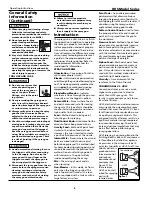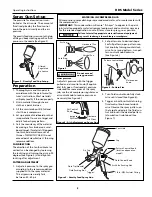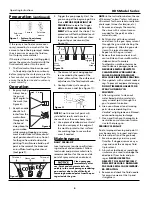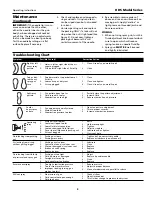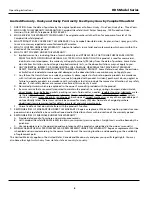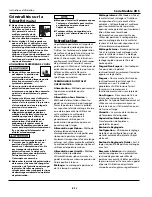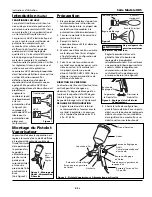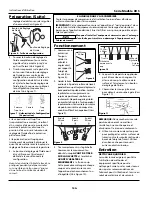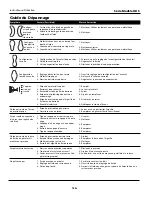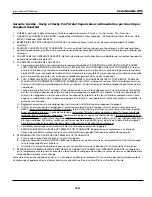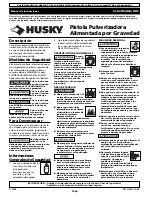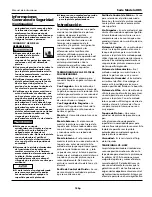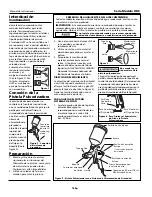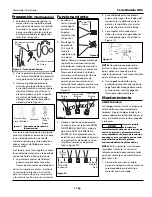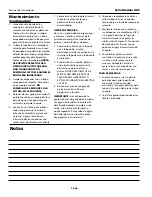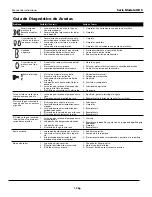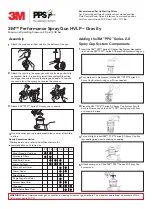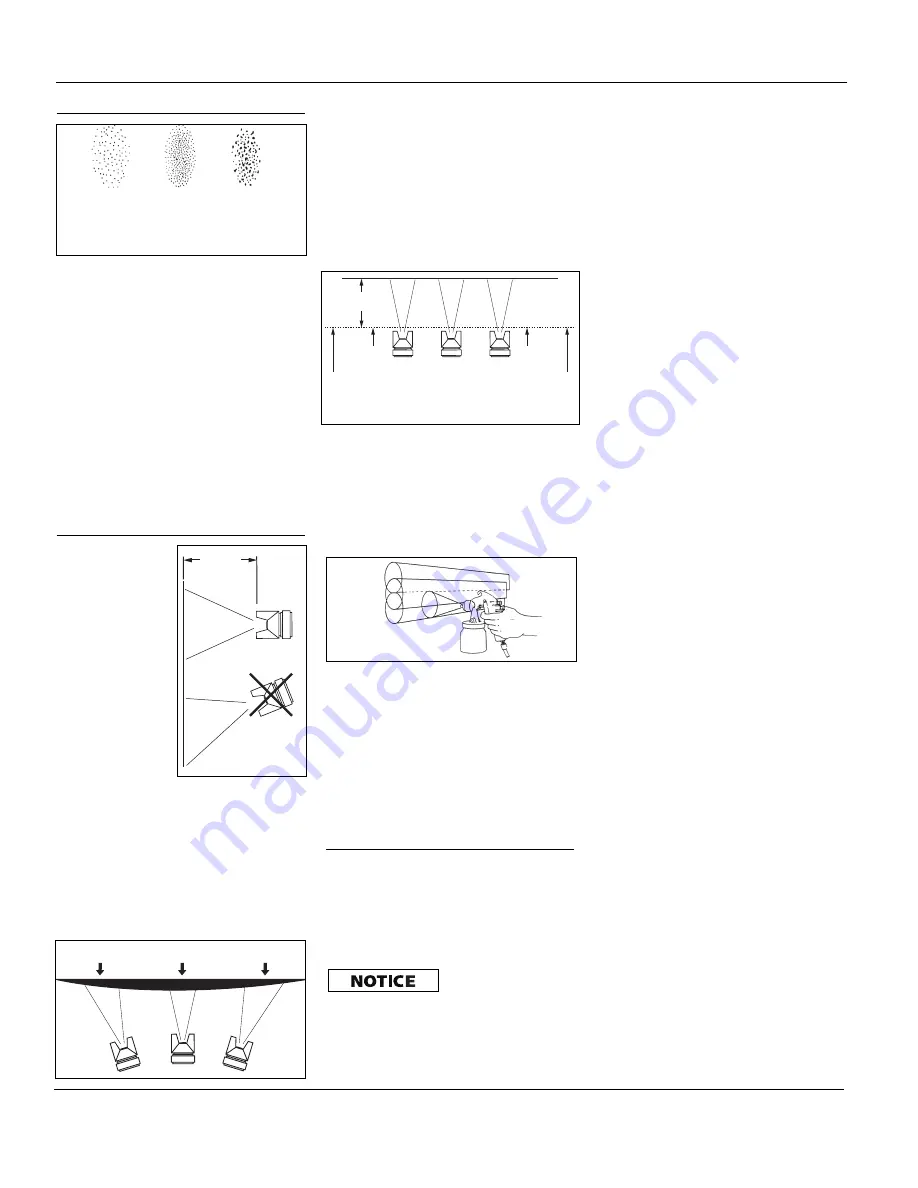
4
Operating Instructions
If the spray is too fine (excessive over-
spray), caused by too much air for the
amount of paint being sprayed, reduce
the air pressure or open the fluid con-
trol to spray more material.
If the spray is too coarse (spitting globs),
reduce the amount of material with the
fluid control knob or thin the paint.
5. The fluid control knob can be used
to finely adjust pattern consistency.
Before spraying the workpiece, practice
a few minutes on a cardboard target to
ensure the pattern size and consistency
are set correctly.
Operation
1. Begin spraying.
Always keep
the gun at
right angles to
the work (See
Figure 8).
2. Keep the nozzle
about 6 to 9
inches from the
work surface
throughout the
stroke and
always keep the
gun in motion
while spraying. Stopping gun move-
ment in mid-stroke will cause a build
up of paint and result in runs. Do not
fan the gun from side to side while
painting. This will cause a build-up of
paint in the center of the stroke and
an insufficient coating at each end
(See Figure 9).
3. Trigger the gun properly. Start the
gun moving at the beginning of the
stroke
BEFORE SQUEEZING THE
TRIGGER
and release the trigger
BEFORE STOPPING GUN MOVE-
MENT
at the end of the stroke. This
procedure will feather (blend) each
stroke with the next without show-
ing overlap or unevenness (See
Figure 10).
4. The amount of paint being applied
can be varied by the speed of the
stroke, distance from the surface and
adjustment of the fluid control knob.
5. Overlap strokes just enough to
obtain an even coat (See Figure 11).
NOTE:
Two thin coats of paint will
yield better results and have less
chance of runs than one heavy layer.
6. Use a piece of cardboard as a shield
to catch overspray at the edges of
the work to protect other surfaces.
Use masking tape to cover other
areas if needed.
Maintenance
DAILY CLEAN-UP
Local codes may require specific clean-
ing methods and equipment. Follow
local codes and paint manufacturer’s
recommendations for the use and dis-
posal of spray materials and solvent.
Clean spray gun
immediately after
use. Paint and other materials dry
quickly in the small passages rendering
gun useless due to the difficulty of
removing hardened paint from the pas-
sages inside the gun.
NOTE:
In the instructions below, the use
of the word “solvent” refers to the spe-
cific solvent for the material used (exam-
ple: lacquer thinner for lacquer, etc.).
1. Remove and empty the canister;
then rinse with a solvent recom-
mended for the paint or other
material used.
2. Refill canister with clean solvent
and attach to the gun. Spray solvent
through the gun while shaking the
gun vigorously. Wipe the gun exte-
rior with a solvent soaked rag.
Repeat until the gun is clean.
3. Remove the air cap and soak in sol-
vent until clean. Use a small brush for
stubborn stains if necessary.
Toothpicks or small brushes may be
used to clean air passages; however,
NEVER USE METAL OBJECTS TO
CLEAN PRECISELY DRILLED PAS-
SAGES. DAMAGED PASSAGES
WILL CAUSE IMPROPER SPRAYING.
4. Clean gaskets with a solvent soaked
rag. To prevent equipment damage,
DO NOT IMMERSE GASKETS OR
SPRAY GUN BODY IN
SOLVENTS.
5. After using water to clean out
water based paints or materials,
spray mineral spirits through the
gun to prevent corrosion.
6. Use a non-silicone oil on all moving
parts when reassembling. Use
Vaseline
®
or light grease on all thread-
ed connections prior to storage.
7. Clean and flush gun thoroughly to
neutralize any contaminants corro-
sive to the spray gun.
PERIODIC CLEAN-UP
Due to improper cleaning and paint it
may be necessary to inspect and clean
the internal parts and the gun body.
1. Examine openings in air cap and
fluid tip. If clogged, remove any o-
rings and soak the air cap or fluid
tip in solvent.
2. A brush or toothpick or something
similar may be used to dislodge the
dried paint from holes and pas-
sages.
NEVER USE METAL
OBJECTS TO CLEAN PRECISELY
DRILLED PASSAGES. DAMAGED
PASSAGES WILL CAUSE IMPROP-
ER SPRAYING.
3. Remove and check the fluid needle
for excessive wear at the tip and
straightness.
Figure 11
6 - 9 in.
Figure 8
Thin coat
Thin coat
Heavy coat
Figure 9
INCORRECT
6 - 9 in.
Pull
Trigger
Start
Stroke
Release
Trigger
End
Stroke
Figure 10
Correct
Paint too
coarse
Paint too
fine
Figure 7 - Pattern Consistency
(Atomization)
Preparation
(continued)
HDS Model Series


